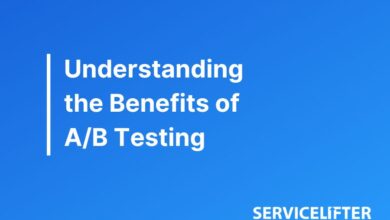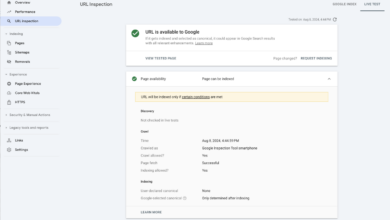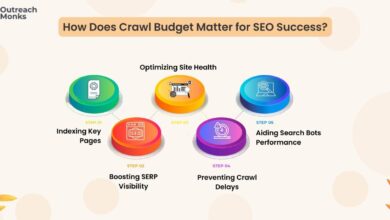
Conversion Test Tracking Your Guide to Growth
Conversion test tracking – Conversion test tracking is the key to unlocking your website’s true potential. It’s not just about counting clicks; it’s about understanding
-why* users take action. This comprehensive guide delves into the intricacies of conversion tracking, from defining key metrics to implementing robust systems and analyzing data to drive significant improvements. We’ll cover everything from basic setup to advanced techniques like attribution modeling and predictive analytics.
We’ll explore the various types of conversions you can track, such as form submissions, purchases, or newsletter sign-ups. Understanding these different actions and the metrics associated with them is critical to achieving a clear picture of your website’s performance. Learn how to effectively analyze this data to identify patterns, pinpoint areas for improvement, and ultimately boost your conversion rates.
Defining Conversion Test Tracking
Conversion test tracking is a crucial aspect of optimizing online marketing campaigns. It allows businesses to meticulously monitor the effectiveness of their strategies, identifying areas for improvement and maximizing the return on investment (ROI) from digital initiatives. Understanding how users interact with websites and landing pages is key to understanding which elements drive conversions and which ones hinder them.Conversion test tracking meticulously records user actions across various touchpoints, enabling a deep dive into user behavior and conversion patterns.
By analyzing this data, marketers can refine their strategies, leading to more effective and efficient marketing campaigns. It’s a dynamic process of continuous improvement, driven by the data it collects.
Conversion Test Tracking Definition
Conversion test tracking is the systematic monitoring and recording of user interactions with a website or app, focusing on actions that lead to desired outcomes. This process encompasses tracking all steps in the conversion funnel, from initial engagement to final purchase or desired action. The data collected is used to assess the effectiveness of different marketing strategies and optimize campaigns.
Key Components of a Conversion Test Tracking System
A robust conversion test tracking system consists of several interconnected elements. These include: tracking tags and pixels to monitor user activity, data collection and storage mechanisms, a robust analytics platform to process and interpret the data, and reporting dashboards to visualize key metrics. The system must be seamlessly integrated with the website or application to ensure accurate data collection.
Types of Conversions Tracked
Conversion tracking encompasses a wide array of user actions. These include purchases, form submissions, newsletter sign-ups, lead generation, product views, add to cart actions, and downloads. Tracking these actions provides valuable insights into user behavior and campaign effectiveness.
Metrics for Measuring Conversion Rates
Conversion rates are measured using various metrics. These include the overall conversion rate, which is the percentage of visitors who complete a desired action, and the conversion rate for specific campaigns or channels. Other metrics include bounce rate, which measures the percentage of visitors who leave the site after viewing only one page, and average session duration. These metrics, when analyzed in conjunction, provide a comprehensive understanding of campaign performance.
Common Conversion Events and Metrics
| Conversion Event | Metric |
|---|---|
| Purchase | Purchase Conversion Rate, Average Order Value |
| Form Submission | Form Submission Rate, Lead Generation Rate |
| Newsletter Signup | Newsletter Signup Rate, Email Open Rate |
| Product View | Product View Rate, Average Products Viewed Per Session |
| Add to Cart | Add to Cart Rate, Cart Abandonment Rate |
| Download | Download Rate, File Completion Rate |
Implementing Tracking Systems
Conversion tracking isn’t just about knowing
- if* a user converted; it’s about understanding
- how* and
- why*. A robust tracking system allows you to meticulously analyze user journeys, identify bottlenecks, and optimize campaigns for maximum impact. This deep dive into implementation details will equip you with the knowledge to build a powerful conversion tracking system.
Implementing a conversion tracking system is a crucial step in optimizing your marketing efforts. It’s not just about installing a few lines of code; it requires a strategic approach that aligns with your business objectives and integrates seamlessly with your existing infrastructure.
Setting Up a Conversion Test Tracking System
Setting up a conversion tracking system requires careful planning and execution. Begin by clearly defining your conversion goals. Are you tracking purchases, lead submissions, or newsletter sign-ups? Precisely defining these goals ensures that your tracking system measures the metrics that truly matter to your business. Thorough documentation of these goals is critical for future reference and analysis.
Integrating Tracking Codes with Various Platforms
A crucial aspect of implementing conversion tracking is seamlessly integrating tracking codes into your website and marketing automation platforms. This integration ensures that every conversion event is accurately recorded and reported. This section will provide a practical guide on this critical step.
- Website Integration: Place the tracking code snippet in the header section of all pages where conversions can occur. Tools like Google Tag Manager (GTM) make this process significantly easier by providing a central location to manage and deploy tracking codes. This method reduces the risk of errors and simplifies updates. It’s crucial to use the correct code snippets and ensure that they are placed correctly to avoid impacting page load times or functionality.
- Marketing Automation Integration: Integrate your tracking system with marketing automation platforms (e.g., HubSpot, Marketo) to link conversion data with marketing campaign performance. This integration allows for detailed analysis of campaign effectiveness and identification of high-performing campaigns.
Tools and Technologies for Conversion Tracking
Various tools and technologies are available for implementing conversion tracking. Choosing the right ones depends on your specific needs and budget. Consider factors like scalability, ease of use, and reporting capabilities.
- Google Analytics: A widely used platform for website analytics, providing comprehensive data on user behavior and conversions. It’s particularly effective for understanding user journeys and identifying potential bottlenecks in the conversion funnel.
- Google Tag Manager: A versatile tool for managing and deploying tracking tags without directly modifying website code. This approach simplifies the updating and management of tracking codes and tags.
- Marketing Automation Platforms: Platforms like HubSpot, Marketo, and Pardot provide built-in tracking capabilities for marketing campaigns, facilitating a complete view of the conversion funnel.
Importance of Proper Tagging and Implementation
Accurate results hinge on the proper tagging and implementation of conversion tracking. Inaccurate tagging can lead to misleading insights and poor decision-making. Ensure the correct tags are applied to track desired events, and carefully review the tracking implementation to avoid errors.
- Accuracy and Precision: Ensure all conversion events are tagged correctly to avoid inaccurate data. Double-check for any errors that may lead to skewed insights.
- Attribution Modeling: Correct implementation allows for accurate attribution of conversions to specific marketing campaigns. This understanding of the channels that drive conversions enables informed decisions for optimization.
Step-by-Step Guide for Implementing a Conversion Tracking System
A structured approach to implementing a conversion tracking system is essential. This step-by-step guide provides a clear roadmap.
- Define Conversion Goals: Clearly define what constitutes a conversion for your business. Examples include purchases, form submissions, or newsletter sign-ups. Be specific and measureable.
- Choose Tracking Tools: Select the appropriate tracking tools based on your needs and budget. Consider factors such as ease of use, scalability, and reporting capabilities.
- Integrate Tracking Codes: Integrate the chosen tracking codes with your website and marketing automation platforms. Use tools like GTM to simplify this process.
- Test and Validate: Thoroughly test the tracking system to ensure accurate data collection and reporting. Validate the data against expected results to confirm its accuracy.
- Analyze and Optimize: Analyze the data collected to identify patterns and areas for improvement. Use the insights gained to optimize your marketing strategies and campaigns for better results.
Analyzing Tracking Data
Conversion tracking systems generate a wealth of data, but raw numbers are meaningless. Effective analysis reveals patterns and trends, leading to informed decisions and optimized conversion rates. This phase requires careful interpretation, meticulous observation, and a structured approach. Understanding how to interpret this data is crucial for extracting actionable insights.
Interpreting Conversion Data
Conversion data provides insights into user behavior, highlighting pain points and opportunities for improvement. Analyzing metrics like bounce rate, time on page, and click-through rates (CTR) offers valuable information about the effectiveness of different elements on your landing page. For example, a high bounce rate on a specific page might indicate a poor user experience or a confusing layout.
By understanding user interactions, we can tailor our approach for greater engagement and higher conversions.
Identifying Key Patterns and Trends
The key is to look beyond individual metrics and discern overarching patterns. Are certain user segments responding better to specific calls to action? Is there a correlation between the time of day and conversion rates? By scrutinizing data across various dimensions, we can pinpoint actionable insights. Regular reporting and visualization tools are indispensable in identifying these patterns, enabling informed decision-making.
A simple graph showcasing daily conversion rates could reveal seasonal fluctuations or specific days with higher engagement.
Optimizing Conversion Rates Using Data
Conversion rate optimization (CRO) hinges on data-driven decisions. A/B testing and multivariate testing are integral components. A/B testing compares two versions of a page element (e.g., button color, headline), while multivariate testing evaluates multiple variations simultaneously. Conversion tracking data provides the metrics to determine which version performs better. By systematically testing different variations, we can progressively enhance the user experience and maximize conversions.
The key is to rigorously test changes and analyze the results to identify what works best.
A/B Testing and Multivariate Testing
A/B testing is a powerful tool for evaluating variations in page elements. A typical example might involve comparing a red button with a green button to see which prompts a higher click-through rate. Multivariate testing, on the other hand, allows for testing multiple variables simultaneously. For instance, it might evaluate variations in both button color and headline text.
The iterative process of testing and analyzing data from these tests allows for continuous optimization. These tests, when combined with the insights from the tracking data, allow for continuous improvements in conversion rates.
Metric Correlation
Understanding the relationships between different metrics is vital. The table below illustrates potential correlations, but this is not an exhaustive list and specific correlations will depend on the website and campaign.
| Metric 1 | Metric 2 | Correlation |
|---|---|---|
| Time on Page | Conversion Rate | Positive (Generally, longer time on page suggests deeper engagement and higher conversion potential) |
| Bounce Rate | Conversion Rate | Negative (Higher bounce rate suggests lower user engagement and lower conversion potential) |
| Click-Through Rate (CTR) | Conversion Rate | Positive (Higher CTR indicates more effective calls to action and higher conversion potential) |
| Cost Per Acquisition (CPA) | Conversion Rate | Inverse (Lower CPA suggests more effective marketing campaigns and higher conversion potential) |
Best Practices and Strategies
Conversion test tracking is crucial for understanding user behavior and optimizing online experiences. Effective strategies leverage data analysis to refine marketing campaigns, website design, and product offerings, ultimately boosting conversion rates. This section explores key best practices and successful strategies for maximizing the impact of conversion tracking.Clear goals and objectives are fundamental to successful conversion test tracking. Defining specific, measurable, achievable, relevant, and time-bound (SMART) goals ensures that all tracking efforts align with the overall business objectives.
Without clear goals, data analysis becomes fragmented and less impactful.
Successful Conversion Test Tracking Strategies
Various strategies have proven effective in maximizing conversion rates. A/B testing, for example, allows comparing different versions of webpages or marketing materials to identify which performs better. Implementing multivariate testing goes further by examining the impact of multiple variables simultaneously. A/B testing can be used to optimize landing pages, email subject lines, or even call-to-action buttons.
Importance of Clear Goals and Objectives
Clearly defined goals and objectives are essential for effective conversion tracking. For example, if the goal is to increase online sales by 15% within the next quarter, all tracking efforts should be focused on measuring and analyzing metrics directly related to this objective. This includes website traffic, conversion rates, and customer behavior. Metrics like bounce rate, time on site, and pages per visit can also be used to determine user engagement.
Improving Conversion Rates Based on Data Analysis
Data analysis is crucial for improving conversion rates. Analyzing user behavior on a website, including which pages are visited, the time spent on each page, and the conversion paths, provides valuable insights. Identifying patterns in user behavior helps pinpoint areas for improvement, such as simplifying navigation or improving the clarity of calls-to-action. For example, if a high percentage of users abandon the shopping cart, data analysis can help determine the cause.
Conversion test tracking is crucial for understanding what works and what doesn’t. A key element in optimizing these tests is integrating smart chatbots, like the ones showcased in the best chatbots examples. By analyzing user interactions with these chatbots, you can glean valuable insights to refine your conversion strategies and ultimately boost your bottom line.
The data from these tests will help you see where you can improve the overall user experience and conversion rates.
It could be a complicated checkout process, hidden costs, or insufficient product information.
Comparison of Conversion Optimization Approaches
Different approaches to conversion optimization exist, each with its own strengths and weaknesses. For instance, focusing solely on improving the user interface (UI) can lead to increased engagement, but without considering the user experience (UX), the results may be limited. Conversely, optimizing the UX, including improving navigation and clarity, can lead to a more positive user experience, but without considering the technical aspects, it might not yield the expected results.
Role of User Experience (UX) in Conversion Tracking
A positive user experience (UX) significantly impacts conversion rates. A seamless and intuitive website design can guide users towards desired actions, such as making a purchase or filling out a form. Conversely, a frustrating or confusing experience can deter users and lead to abandonment. By focusing on user needs and preferences, businesses can create a more engaging and satisfying experience.
Comparison of Conversion Tracking Tools
| Tool | Features | Pros | Cons |
|---|---|---|---|
| Google Analytics | Comprehensive website analytics, robust reporting, integration with other Google services | Free, extensive features, vast community support, excellent data visualization | Can be complex to set up for beginners, requires some technical understanding |
| Hotjar | Heatmaps, recordings of user sessions, feedback tools | Excellent for understanding user behavior, provides detailed insights, user-friendly interface | Limited to only understanding user behavior on a website, not for tracking outside interactions |
| VWO (Visual Website Optimizer) | A/B and multivariate testing, conversion rate optimization | Simple to use for A/B testing, user-friendly interface, excellent support | Pricier than other tools, limited features compared to Google Analytics |
Troubleshooting and Error Handling: Conversion Test Tracking
Conversion test tracking, while powerful, can be prone to errors. Understanding potential issues and how to resolve them is crucial for extracting accurate insights and avoiding misleading conclusions. This section delves into troubleshooting common problems, interpreting data effectively, and maintaining the integrity of your tracking systems.Effective troubleshooting involves identifying the root cause of errors rather than just addressing symptoms.
A systematic approach, combined with a thorough understanding of the tracking system’s mechanics, will lead to more efficient and sustainable solutions. Careful attention to detail and meticulous record-keeping are vital components of this process.
Common Conversion Tracking Errors and Solutions
Troubleshooting conversion tracking often involves identifying discrepancies between expected and observed results. A systematic approach, combining technical analysis with data interpretation, is vital.
Conversion test tracking is crucial for optimizing your campaigns, but knowing where to start can be tough. Understanding how different ad variations perform is key, and that’s where a deep dive into the intricacies of Twitter advertising comes in handy. Check out the advanced guide to twitter advertising for a comprehensive breakdown of Twitter ad strategies, which will help you analyze your conversion tests more effectively.
Ultimately, thorough conversion test tracking is essential for campaign success on any platform.
| Error | Cause | Solution |
|---|---|---|
| Missing Pixel/Tag | The conversion tracking pixel or tag might be missing from the webpage or incorrectly implemented. | Double-check the implementation code on all relevant pages. Verify that the tag is correctly integrated and that there are no syntax errors. Use browser developer tools to inspect the tag’s presence and functionality. |
| Incorrect Event Tracking | Events are not correctly registered or mismatched with the actual actions. | Ensure that the tracking code correctly identifies and records the desired events. Compare the event names and parameters in the code with the actual user interactions. |
| Data Duplication/Redundancy | Duplicate or redundant data entries in the tracking system. | Review the data pipeline and identify potential sources of duplicate entries. Implement data cleansing procedures to eliminate redundant data and maintain data integrity. Verify that data is collected and aggregated only once. |
| Inconsistent Data Formatting | Data from different sources might have differing formats, leading to inaccurate aggregations. | Standardize data formats across all tracking sources. Use consistent naming conventions and ensure that all data fields are properly mapped. |
| Incorrect Tracking Parameters | Parameters associated with events or conversions might be incorrectly set or missing. | Verify that the parameters accurately reflect the relevant information (e.g., product ID, campaign name, user demographics). Cross-reference the parameter values with the expected values in the tracking code. |
Challenges in Data Interpretation and Overcoming Them, Conversion test tracking
Data interpretation requires a nuanced understanding of the collected information. Interpreting data requires a keen eye for patterns and trends and a capacity to differentiate between meaningful insights and random fluctuations.Misinterpreting data can lead to poor decision-making. Careful consideration of factors such as seasonality, external events, and sample size is crucial. Contextual awareness is vital for accurate interpretation.
Conversion test tracking is crucial for understanding what works and what doesn’t. It’s all about measuring the effectiveness of different strategies. Recently, Instagram dropped IGTv Ignite Friday, a new feature that could significantly impact your engagement and conversions. But don’t just jump on the bandwagon – careful conversion test tracking is still key to maximizing the return on your efforts.
Identifying and Resolving Technical Issues with Tracking Systems
Technical issues in tracking systems can significantly impact data accuracy. A systematic approach is necessary to isolate and address these issues.Common technical issues include server errors, network problems, or issues with the tracking platform itself. Detailed error logs and monitoring tools can help identify the source of the problem.
Ensuring Data Integrity and Accuracy in Tracking Systems
Data integrity is paramount for reliable conversion test tracking. Implementing robust data validation processes and regularly auditing data quality can prevent errors from propagating and affecting results.Data validation rules should be designed to catch inconsistencies and outliers. Regular data audits can help detect anomalies and address potential issues before they significantly impact results. Data security measures are crucial for safeguarding the confidentiality and integrity of the collected information.
Advanced Techniques
Conversion test tracking is no longer just about basic tracking. Modern businesses need sophisticated strategies to truly understand user behavior and optimize their conversion funnels. Advanced techniques like attribution modeling and predictive analytics provide invaluable insights, enabling data-driven decisions and ultimately boosting conversions.
Attribution Modeling
Attribution modeling goes beyond simply identifying which touchpoint led to a conversion. It attempts to assign a degree of influence to each interaction a user has with a website or app. Different models exist, each focusing on a particular aspect of the user journey. For example, the last-click model credits the final touchpoint, while the first-click model gives credit to the initial interaction.
Choosing the right model depends on the specific marketing goals and the nature of the customer journey. Understanding which model aligns with the conversion funnel’s dynamics is crucial for accurate analysis.
Predictive Analytics
Predictive analytics leverages historical data and machine learning algorithms to forecast future outcomes. In conversion test tracking, this means predicting which users are most likely to convert, allowing for targeted campaigns and personalized experiences. For instance, by analyzing past browsing history, demographics, and interaction patterns, a predictive model can identify users with a high probability of completing a purchase.
This allows businesses to focus resources on those most likely to convert, optimizing campaign performance and ROI.
Personalizing User Experiences
Leveraging data to personalize user experiences is a critical element of advanced conversion test tracking. Analyzing user behavior data, such as website browsing patterns, purchase history, and demographic information, allows for the creation of tailored experiences. Personalized recommendations, targeted offers, and customized content can significantly enhance user engagement and conversion rates. For example, if a user frequently views specific product categories, personalized recommendations of similar items can boost sales.
Reporting and Presenting Conversion Data
Effective reporting and presentation of conversion data is essential for decision-making. Visualizations like charts, graphs, and dashboards make complex data easily understandable. Interactive dashboards allow real-time monitoring of key metrics, facilitating agile adjustments to campaigns. A well-designed report should clearly highlight key trends, patterns, and actionable insights. Clear and concise reporting empowers businesses to understand performance, identify areas for improvement, and adjust strategies accordingly.
Machine Learning in Optimizing Conversion Rates
Machine learning algorithms can significantly enhance conversion rate optimization. These algorithms can identify patterns and correlations within vast datasets that humans might miss. For example, a machine learning model can identify the optimal pricing strategy, personalize website content, and predict user behavior. By automating these tasks, businesses can free up resources and focus on higher-level strategic initiatives.
Implementing a Predictive Analytics Model for Conversion Tracking
- Data Collection: Gathering relevant data points, such as user demographics, browsing history, and past purchase behavior.
- Data Preparation: Cleaning and transforming the collected data to ensure accuracy and consistency. This might involve handling missing values, converting data types, and normalizing data.
- Model Selection: Choosing a suitable machine learning algorithm, considering the nature of the data and the desired outcome. Different algorithms are suited for various tasks. For instance, logistic regression is suitable for binary classification, predicting conversion or not.
- Model Training: Training the selected algorithm using the prepared data. This involves adjusting the model’s parameters to optimize its performance.
- Model Evaluation: Assessing the model’s performance through metrics like accuracy, precision, and recall. This involves splitting the data into training and testing sets. Regularly evaluating model performance is crucial for ensuring accuracy and relevance.
- Deployment: Integrating the trained model into the conversion tracking system to automatically predict conversion probabilities.
- Monitoring and Iteration: Continuously monitoring the model’s performance and updating it with new data to maintain accuracy and relevance. The model should be retrained periodically with fresh data to ensure accuracy and adapt to evolving user behavior.
Closing Notes
In conclusion, conversion test tracking isn’t a one-size-fits-all solution. It’s about meticulously tracking user behavior, interpreting the data, and adapting your strategies to optimize your website’s effectiveness. By implementing the best practices and strategies Artikeld in this guide, you’ll be well-equipped to maximize your website’s conversion potential. Remember to consistently monitor and adjust your approach based on the data to maintain optimal performance.
Let the journey begin!





